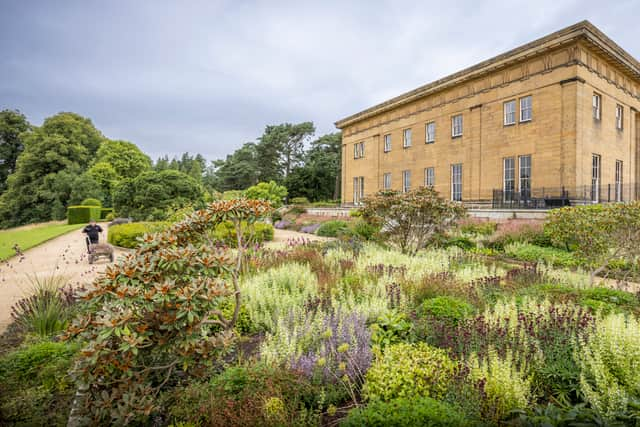Historic country house built in Greek temple-style is restored to its former glory after centuries of damp


After countless years of decay, damp and leaks, a unique country home in England has been restored to its former glory. After a major undertaking, Belsay Hall - built to emulate a famed Greek temple - is now preserved for future generations.
A two-year conservation project has been completed at Belsay Hall, Castle and Gardens in Northumberland, English Heritage has announced.
Advertisement
Hide AdAdvertisement
Hide AdAs of August 23, the charity revealed the results of major work to conserve the hall and rejuvenate its renowned historic gardens.
With its Grecian architecture, medieval castle and 30-acre Grade I-listed gardens, Belsay - built in 1817 - is considered a 'jewel in the North East', but in recent years, time had begun to take its toll.


Mark Douglas, English Heritage’s Properties Curator, said: “The Belsay that visitors see today comprises three distinct but related elements: a medieval castle, a Greek-Revival country house, which superseded it as a family residence at the beginning of the 19th century, and a beautiful garden linking the two buildings.
"Designed by Sir Charles Monck (1779 -1867) after a two-year-long honeymoon taking in the classical sites of Greece, Belsay is one of the earliest Greek revival houses in Britain.
Advertisement
Hide AdAdvertisement
Hide Ad"Although a remarkable architectural feat, having been designed according to Greek tradition in decimals, not feet and inches – and modelled on the still-standing Temple of Hephaestus in Athens – Belsay Hall’s concealed gutters proved, over the next two hundred years, to be its downfall; it appears that Monck hadn’t accounted for Northumberland’s harsh winters.
"It has been such a relief to finally banish the damp from the Hall and safeguard Belsay for future generations.”


In the Hall, its unique architectural design caused leaks, while in the gardens much of the original planting material had been lost and the Hall woodland garden had become swamped by overgrown laurels and rhododendrons.
Now, after a two-year conservation project, Belsay Hall’s original roof – which caused damp issues for over two hundred years – has been replaced, the castle’s medieval stonework has been repaired, and the gardens have been brought back to their glorious best by landscape designer and gardener Dan Pearson.
Advertisement
Hide AdAdvertisement
Hide AdWorking alongside Dan, the gardens team at Belsay have worked tirelessly to plant over 80,000 new plants, with 35,000 alone in the Hall’s Woodland, creating a beautiful burst of colour for visitors this summer and restoring previously lost historic views on Crag Wood’s scenic walk.
Thanks to a grant of £3.4 million from The National Lottery Heritage Fund, support from Garfield Weston Foundation and The Foyle Foundation and other generous donations, there are also new family-friendly spaces and a children’s woodland play-and-learn area with an outdoor classroom and new interpretation across the site.
John Watkins, English Heritage’s Head of Gardens and Landscapes, said: “Belsay Hall sits within an extensive Grade I picturesque landscape, with gardens both formal and wild leading visitors on a journey between the Hall and Castle.
"The stone used to build the hall was carefully quarried on site to form dramatic ravines, influenced by Sicilian quarries creating a sublime picturesque experience fashionable at the time. In the late 19th and early 20th century, the West Quarry was planted with newly imported exotic plants, many from Asia that continue to thrive in this extraordinary environment."
Advertisement
Hide AdAdvertisement
Hide AdElsewhere on site new interpretation, centring around ‘The Wildman’ – a medieval mythical figure which features on the coat of arms of the Middleton family who owned Belsay for over 700 years – will bring the stories of the castle back to life with a projected animation and soundscape on the ground floor, which will be more accessible thanks to a new ramp. This theme is continued in the woodlands where a new children’s play area has been installed, and The Coach House building has been restored and transformed into a welcoming new café with its own renewable energy and rainwater harvesting.
Comment Guidelines
National World encourages reader discussion on our stories. User feedback, insights and back-and-forth exchanges add a rich layer of context to reporting. Please review our Community Guidelines before commenting.
